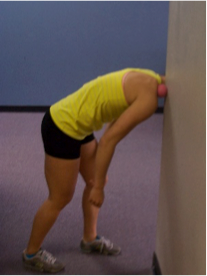Treating Groin Pain Naturally
Author: Julie Donnelly, LMT – The Pain Relief Expert
Editor: Dr. Steve Chaney
 The holidays are inching up on us, and this month is one of my favorites. I love Halloween because the children have so much fun dressing up and going to parties.
The holidays are inching up on us, and this month is one of my favorites. I love Halloween because the children have so much fun dressing up and going to parties.
Back when I was a child we could roam around the neighborhood, knocking on doors and having our candy dropped into the pumpkin basket or pillowcase our moms gave us. We traveled in a pack, and our parents knew we were safe as long as we stayed in our neighborhood because everyone knew everyone.
Nowadays children go to “Trunk or Treat” parties, often with mom or dad in tow. They’re still having fun, and it’s great to see their excitement when they’re sharing with each other how many goodies they have collected.
Now, even just LOOKING at that candy makes me gain 5 lbs! Oh well!
Happy October to you and your family!
Your Pectineus Muscle And Groin Pain
Today, we will be discussing how a small muscle that most people aren’t even aware of can cause groin pain. I’ve been working with athletes since 1989 and I’ve seen this small muscle cause such pain that it was preventing the athlete from continuing with his/her sport. And it’s so simple to treat!
The pectineus muscle is in your adductor muscle group. The adductors are responsible for hip flexion and adduction.
Adduction is when you bring your leg closer to the opposite leg, such as when you cross your legs when you are sitting down. Athletes who play soccer, or who ride a horse, are heavily using their adductor muscles.
 As you look at the graphic on the left, the muscles on the left side (right leg) are the larger adductor muscles.
As you look at the graphic on the left, the muscles on the left side (right leg) are the larger adductor muscles.
The pectineus is shown on the right side (left leg) so that it is more visible, helping you see the location of the muscle. In reality, all the muscles are on both sides.
Since the pectineus muscle is so close to the pubic bone, it is more difficult to self-treat. You need to sit on the floor and twist yourself, so the sore side is pressing into the floor.
The pectineus muscle is often overlooked, but it can cause significant pain when in spasm or injured. Here are some of the symptoms, causes, and a simple self-treatment I have developed for a tight pectineus.
Quick Facts About Groin Pain And Your Pectineus Muscle
Causes of Spasms of the Pectineus and Adductors:
- Muscular injuries of the adductors, the iliopsoas muscle, and abdominal musculature are the most frequent causes of acute groin pain in sportsmen and sportswomen.
- Spasms in your pectineus muscle are also a common cause of groin pain and are often overlooked.
- Pectineus pain often stems from an injured groin muscle. Common causes include running, kicking a soccer ball, riding a horse, and sitting with a crossed leg.
Symptoms Of Groin Pain Caused By Your Pectineus Muscle:
- Groin pain is any discomfort in the area between your abdomen and thigh, located where your abdomen ends, and your legs begin.
- Localized pain on the pubic bone, in the groin area, on one side or the other, is a primary indication of injury to the pectineus.
- Pain on palpation of the involved muscle and pain on adduction (moving your legs closer together against resistance) is also an indication of injury to the pectineus.
Treating Groin Pain Naturally
You are trying to be pressing close to your pubic bone, which is shown in the graphic above.
 Sit as shown and use a ball to press deeply into your adductors. Start the treatment at the very top of the muscles, close to your pubic bone, and move down toward your knee.
Sit as shown and use a ball to press deeply into your adductors. Start the treatment at the very top of the muscles, close to your pubic bone, and move down toward your knee.
If you find any tender points, called “trigger points,” hold the pressure on the spasm until it stops hurting.
You can also “pump” the trigger point, applying pressure for 15 seconds, then stay where you are but release the pressure for 5 seconds, and repeat this sequence several times until the pain point stops hurting.
You may get better leverage if you lift up your opposite hip (lift up the right hip in this demonstration), bending your right leg so you can press your right elbow into your thigh to get better pressure.
If it’s difficult with the ball, use your right hand fingertips to press on the muscle on your left side.
In conclusion, the pectineus muscle can cause groin pain when injured.
If this simple self-treatment doesn’t help, it would be important to seek medical attention to determine the underlying cause, especially if it is severe or accompanied by other symptoms.
Wishing you well,
Julie Donnelly
www.FlexibleAthlete.com
These statements have not been evaluated by the Food and Drug Administration. This information is not intended to diagnose, treat, cure, or prevent any disease.










































